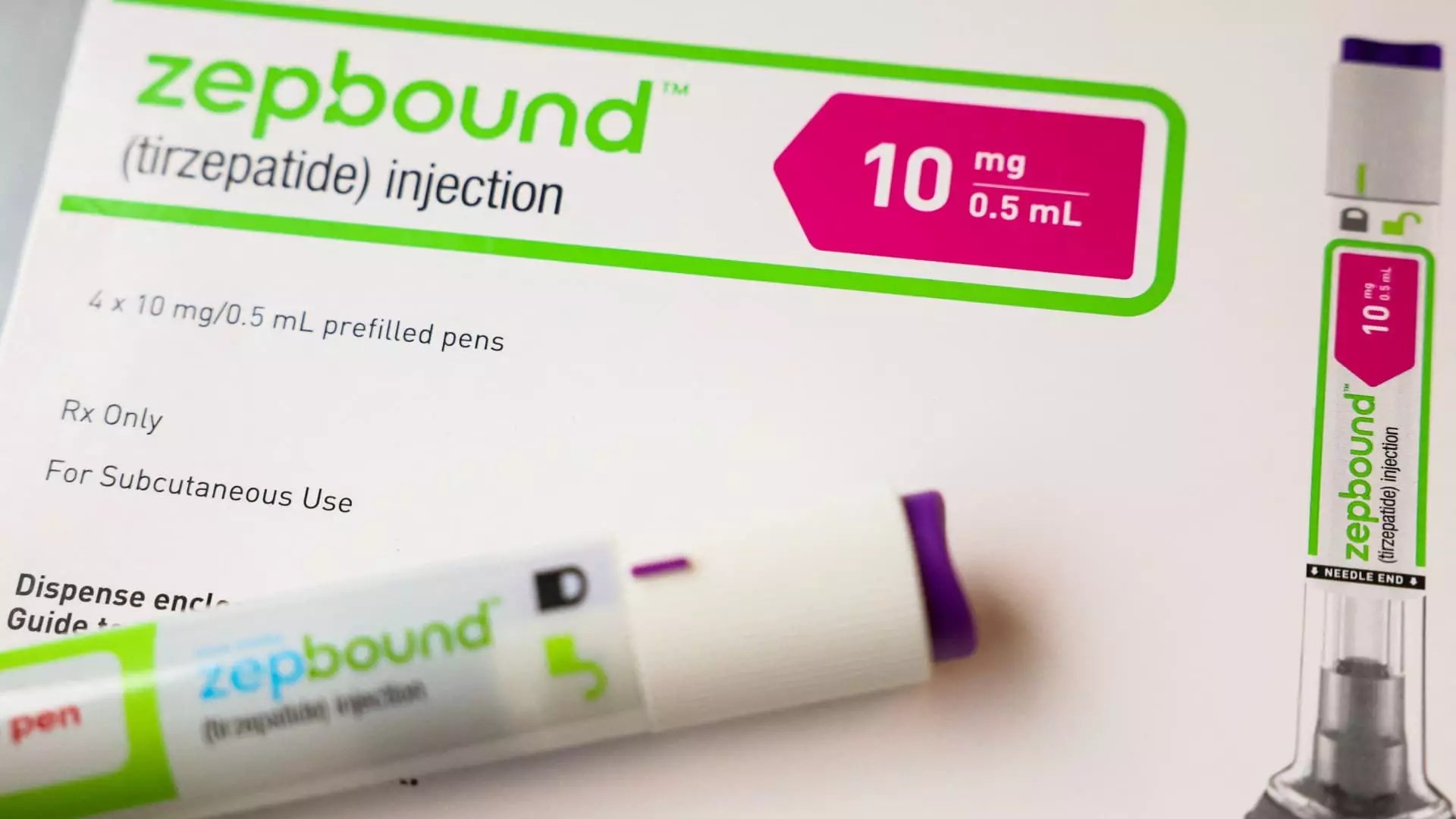In a climate where healthcare costs continue to skyrocket, Eli Lilly’s recent announcement about its weight loss drug Zepbound has stirred both excitement and skepticism. The pharmaceutical giant has decided to release higher doses of Zepbound in single-dose vials at significantly reduced rates, aiming to reach a broader patient base — especially those with Medicare who often find themselves grappling with coverage restrictions. Priced at $499 initially, patients may fill their prescriptions on LillyDirect, the company’s direct-to-consumer platform, promising a more affordable pathway to management of obesity. But let us be candid: this pricing strategy raises questions about how the systemic issues in healthcare are being addressed.
A major reason for concern is that this reduction in price seems like a band-aid solution to a much deeper issue — the exorbitant costs of medical treatments in the United States. Zepbound, touted as a “blockbuster injection,” still comes with a hefty price tag that outpaces typical medication costs, serving as a reflection of a healthcare system that prioritizes profit over patient access.
Market Manipulation and Pricing Strategies
Eli Lilly’s move to lower prices could be interpreted as a calculated strategy to regain market share from a burgeoning sub-industry of compounded drugs, which offer lower-cost alternatives that are legally dubious at best. Though, Eli Lilly proudly states their single-dose vials are not a direct competition against these compounding pharmacies, this assertion smells faintly of market manipulation. By lowering prices to curtail reliance on unregulated alternatives, they may inadvertently be further entrenching themselves in the very system they’re critiquing.
Interestingly, the mechanism of self-administration utilizing syringes rather than more user-friendly autoinjectors seems to reflect an innovative move toward reducing manufacturing costs while creating barriers for the very population it aims to serve. While efficacious in some respects, this self-injection method could alienate certain demographics who might lack experience in self-administration or even the dexterity to effectively use syringes. It underscores the broader issue of accessibility that Eli Lilly claims to champion.
Healthcare Rules and Regulations: A Double-Edged Sword
Patrik Jonsson, President of Eli Lilly’s Diabetes and Obesity unit, has voiced a hope that future policies will expand Medicare coverage for such obesity treatments, a suggestion that reveals a glaring lacuna in our healthcare legislation. It’s mystifying that despite societal recognition of obesity as a chronic disease akin to diabetes, legislative support for treatment remains grossly inadequate. Jonsson’s dream of federal alignment feels less like a realistic goal and more like an echo of corporate pleas amidst legislative inertia.
Furthermore, the significant skepticism reflected by Secretary of Health and Human Services Robert F. Kennedy Jr. towards obesity drugs raises questions about medical ethics. Are we, as a society, overly reliant on pharmaceutical interventions for conditions that could also be managed through lifestyle changes? The very discussions surrounding weight loss drugs tap into deeper societal narratives about health and individual responsibility. Eli Lilly’s assertion that cheaper alternatives pose safety risks does little to mitigate that conversation; instead, it adds fuel to myriad debates about the ethics behind obesity treatments.
Patient Experience: Convenience or Complication?
Eli Lilly seems keen on accessibility, boasting a platform where patients can connect with telehealth services for prescriptions. However, the necessity for patients to navigate this digital labyrinth speaks volumes about how disconnected healthcare is from meaningful patient care. Innovative as it sounds, will the general populace, particularly those in the Medicare laity who may be less tech-savvy, feel empowered by this change, or overwhelmed?
Merely offering services online doesn’t suffice; what about the assistance patients may need in understanding what their options entail? The concept of delivering Zepbound directly to a patient’s doorstep is appealing, but only if patients can easily navigate the system. Without proper patient education or outreach, Eli Lilly risks creating barriers instead of bridging gaps.
The Bottom Line: A Market Shift in Disguise
Ultimately, while Eli Lilly’s initiative to lower pricing for Zepbound appears commendable, it’s crucial to view it through a critical lens. Is this a genuine attempt at improving patient access, or merely a strategic pivot to safeguard market dominance in an evolving healthcare landscape? The race for affordability must extend beyond a few price cuts; it should challenge the very structures that govern these drug costs at a fundamental level. In seeking to fill the void left by inadequate policies and market forces, we must ensure that Eli Lilly’s actions contribute to lasting change that benefits all patients — not just those who can afford to navigate the complexity of this modern healthcare labyrinth.


Leave a Reply